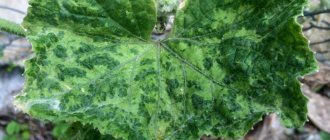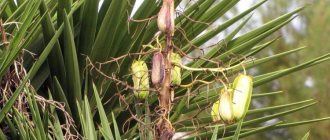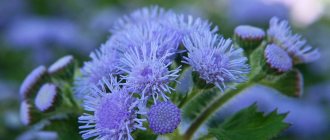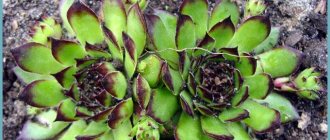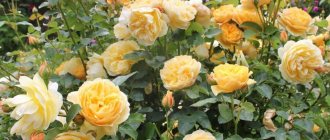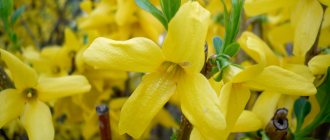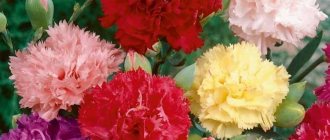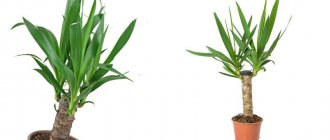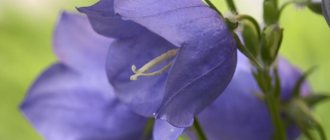Ageratum (Ageratum) is a flowering ornamental plant that will decorate your garden plot. A representative of the Aster family (lat. Asteraceae). There are 60 species of it in the wild, but only one is cultivated - Ageratum mexicanis.
Although its homeland is considered to be South and Central America, ageratum is very popular in India and is found in many countries with tropical and subtropical climates, where it grows as a perennial flowering plant.
In our latitudes, the plant is grown as an annual in open areas. Ageratum is not whimsical, but does not tolerate frost.
In some greenhouses there are ageratum - perennial.
Thanks to its rich variety of colors and colors, I use ageratum to design compositions, as living borders, and flower beds. A garden in which ageratum grows will become the object of everyone's attention, as it attracts the eye with a rich color palette.
Ageratum has been known for more than 200 years, but it began to be actively grown recently, like a flowering carpet, it pleases gardeners with its long flowering from May until the first frost.
Translated from Latin (ageratos) - ageless. Proof of this is its flowering period from May to October, and its ability to remain fresh for a long time after cutting. Due to this property, ageratum is also called centenarian or long-flowered.
Ageratum prefers bright light and warm climates, but can grow in partial shade. It reproduces by seeds, but only a small part of them inherit the maternal similarity. Perennial plants are propagated by cuttings.
Description: Low-growing, barely reaches 0.5 m with a multi-colored range: blue, lilac, lilac, cream. More often in garden plots there is blue with various shades.
There are two types:
- erect
- spreading
There are also dwarf forms, adapted to live indoors.
Fluffy bisexual flowers are collected in a dense inflorescence, 1-1.5 cm in diameter, but despite their small size, their density is impressive, it seems as if you are looking at a fluffy flower carpet.
In the fall, several thousand are collected from one achene.
The bush consists of numerous slightly pubescent stems. In branched varieties with shoots in contact with the ground, adventitious roots grow.
The leaves are oval, triangular or diamond-shaped, green in color, located on short petioles. There are notches along the perimeter of the leaf plate. They are located alternately in the upper part and oppositely in the lower part. The height of erect shoots is up to 60 cm.
Small flowers are collected in inflorescences - baskets. In turn, the baskets are collected in a complex thyroid inflorescence up to 10 cm in length. Bright stigmas and perianths are painted the same color. During the budding period, a strong pleasant aroma is felt.
At the end of August, the fruits begin to ripen as the baskets fade. The fruits are small achenes 3-4 mm long, 0.5 mm wide, dark in color. Seeds of a wedge-shaped pentagonal shape remain viable for up to 4 years.
Perennial varieties of ageratum are propagated by cuttings.
When to sow ageratum for seedlings?
Sowing is carried out from mid-March to mid-April in small containers.
The composition is a mixture of peat, sand and humus taken in equal proportions.
Previously, the substrate is abundantly moistened with a spray bottle and seeds are sown on the surface. The seed material is distributed evenly over the surface, and a 2-3 mm layer of substrate is sprinkled on top.
Then the container is covered with plastic film (a glass jar) or placed in a mini greenhouse, creating greenhouse conditions. It is necessary to maintain 20-22 degrees.
Place the container in a well-lit place without direct sunlight.
The container is regularly ventilated and the soil moisture is monitored, and if necessary, lightly moistened with a spray bottle.
After 1-2 weeks, the first shoots will appear, and upon reaching two of their own leaves, the young shoots dive into separate containers. By this time, the seedlings will have become stronger and do not need a greenhouse.
The second time, each seedling is planted into separate bowls. As soon as the night frosts recede and warm days arrive, ageratum is planted in open areas, as a rule, this happens from mid-May.
Features of growing ageratum Blue mink from seeds
Ageratum Blue Mink is grown by seedlings. There are two, or rather three reasons for this:
- The heat-loving flower has a long growing season. When sowing seeds in early May, the first flowers will appear only in August. Previously planted flowers may die during night frosts.
- Blue mink ageratum seeds are very small and rotting. They are difficult to distribute evenly over the surface. For this reason and because of their poor germination, you can end up with a flower bed with bald spots.
- The plant's shoots are thin and weak. They are easily drowned out by weeds.
Ageratum: planting and care in open ground
2-3 weeks before planting, young shoots are pinned. The temperature is reduced to 15 -17 degrees and taken out into the open air during the day, protected from precipitation and direct rays of the sun.
From the moment of sowing until the buds appear, 2 months pass.
Usually decorated along flower beds and paths as living borders. To create a dense colored coating, seedlings are planted at a distance of 15-20 cm. They are pre-watered and carefully removed from the container.
Small holes are made in the ground where each sprout is placed. Sprinkle the top with soil and water generously.
Ageratum prefers fertile and loose soil, consisting of peat and leaf soil with good water permeability and neutral acidity. Heavy clay soils are not suitable.
Choose a well-lit place; the plant is not afraid of direct rays of the sun. In partial shade, ageratum blooms less intensely.
About a month after planting, the first buds will appear.
Brief information and cultural features
Ageratum is a subshrub or herbaceous plant of the Asteraceae family. Under natural conditions it grows in India and North and Central America as a perennial. In the climatic conditions of our country, it is cultivated exclusively as an annual.
Ageratum does not tolerate frost. Sub-zero temperatures lead to the death of the plant.
The flower acquired its name for its long, continuous flowering. Gardeners affectionately call it longflower, and its Latin name Ageratum comes from the Greek ageratos, which means ageless.
Grown as an annual plant, it begins to bloom as soon as spring frosts recede, and continues to delight with blooming buds until the onset of autumn cold weather. In the northern regions, the flower is grown as seedlings and then planted on the site. In Russia, the most actively and widely used ageratum is Houston or Mexican ageratum.
Ageratum has strong and numerous branched stems. The leaves of different varieties can vary greatly:
- shape: oval, triangular, diamond-shaped;
- according to the degree of pubescence: smooth or heavily pubescent;
- by color: from light to dark green shades;
- along the edges: with jagged or smooth edges.
The ageratum flower is a basket containing two-lobed stigmas, giving beautiful splendor and fluffiness to the inflorescence. The sizes of the baskets vary from 1 to 2 cm. The flowers are collected in rounded inflorescences, resembling pompoms, from very dense to very loose. Their color range is varied: from the commonly found blue and lilac-violet, to white, pink, red and purple. The inflorescences emit a pleasant and fairly persistent aroma.
The seeds are very small, 1 gram contains from 6000 to 7000 pieces. They can be collected immediately after the branch has finished flowering.
Among ageratums there are toxic varieties that have carcinogenic properties. These include Ageratum conyzoides and Ageratum houstonianum.
This plant enjoys well-deserved respect among landscape designers. It gets along easily and combines with other inhabitants of the garden. It can become both the center of a composition and fill existing voids. Florists liked it not only for its beauty, but also for its long-lasting freshness after cutting.
Many varieties and hybrids of ageratum have been developed.
They are divided into three subgroups according to height.
- Dwarf and low-growing, the height of which does not exceed 20 cm.
- They are medium-sized, their height ranges from 20 to 30 cm.
- Tall, reaching 50–60 cm in height.
Ageratum care
Care is not difficult and is suitable for beginner gardeners. Before planting, the soil is mulched with rotted sawdust or manure. When any weeds appear, it is necessary to weed the ground. Loosening is done regularly.
Water moderately in the absence of rain, allow the top layer to dry. Excessive watering leads to rotting of the roots. It is better to under-moisturize than to over-moisturize.
Throughout the season it is necessary to apply fertilizer several times:
- The first time was 2 weeks after disembarkation.
- Second time during budding
- Third time during the flowering period (at the discretion of the gardener)
Organic fertilizers alternate with mineral ones.
If flowering is poor, complex mineral fertilizers are added. Once a season, water with diluted mullein as a top dressing. Do not apply fresh manure or fertilizers with high nitrogen content, as this will speed up the growth of the shoots, but will flower late.
Regularly inspect the surface for the presence of wilted buds (plucking them) and prune the shoots. After circumcision it grows even more. After pruning, several branching points (internodes) should remain.
For intensive flowering, potassium-phosphorus fertilizers are used.
Rules for successful flowering:
- Add fertilizers sparingly, especially nitrogen-based ones.
- The soil is nutritious and loose.
- Good lighting without drafts.
- Regular pruning or pinching of buds.
The buds bloom at different times. If you do not intend to harvest the fruit for re-sowing next year, remove spent buds.
Ageratum after flowering
Wilting begins with the first night frosts and is unable to survive frosts. There are two ways to further propagate ageratum.
Dry the faded fruits and collect planting material from them. Usually collected from main and daughter shoots. Germination persists for 3-4 years and in the spring, as described above, it is sown to grow seedlings. Store in a dry place in paper bags.
The second method is to prolong flowering followed by cuttings.
With the onset of frost, lush bushes that have not yet faded are dug up and transplanted into pots, then the ageratum winters in the apartment. People are gradually being moved from the street to the premises. First, ageratum is left on the balcony or loggia, where the temperature is an order of magnitude lower than room temperature and the temperature is gradually increased.
As a rule, due to the lack of sufficient lighting, it will not bloom again, but the preserved buds will delight the gardener’s eye for a long time.
In some cases, it is possible to extend flowering until the New Year. It is advisable to place ageratum in winter on an unheated veranda or glazed balcony with a temperature of 7-15 degrees. With the onset of March, cuttings are cut. The cut is made oblique to increase the area for absorbing moisture and nutrients from the ground.
Cut cuttings are treated in a growth stimulator (Kornevin, Heteroauxin) and planted in small containers. Cover the top with film or place it in a mini-greenhouse. The soil is constantly kept moist and the temperature is 20-22 degrees.
After 2-3 weeks, the cuttings will quickly take root and after another 2 weeks new shoots will successfully begin to appear. As soon as it gets warmer outside and the night readings rise above 0, the cuttings, like seedlings, are moved into the garden, choosing a sunny place.
This method increases durability and growth.
If for some reason you didn’t want to take cuttings, you can replant the whole thing without any problems. The plant is perennial; therefore, one bush can be preserved for several years.
First steps after purchase
After acquiring Ageratum seedlings or cuttings, the plant needs to be transplanted into a suitable pot. A spacious and voluminous container is suitable, since the young plant quickly gains root mass.
At the bottom you need to lay a thick layer of drainage made of expanded clay, perlite or crushed bricks. The plant is not picky about the composition of the soil. A universal soil mixture or soil from a garden plot will do. The main thing is that the soil has a neutral reaction.
Ageratum seedlings
Ageratum is transplanted together with a ball of earth, which minimizes the risk of injury to the roots. After transfer, the remaining part of the pot is filled with soil and watered generously.
Pests and diseases
Any plant growing outdoors is more susceptible to attack by insects and diseases than indoors.
Ageratum is often accompanied by root rot. The reason for this is a rainy summer or abundant watering. In such a climate, it is necessary to first prepare the site by laying a drainage layer to remove moisture.
In addition, cucumber leaf mosaic, bacterial wilt, nematodes, and armyworms appear.
If affected by root rot, the plant cannot be saved. It gradually fades, leaves and flowers fall off. But there are measures to prevent this unpleasant phenomenon:
- Light and sandy composition
- Drainage system if necessary
- Moderate and controlled watering
- Periodically remove weeds and loosen the substrate
If root rot does occur, the damaged ones are dug up and the healthy ones are treated with the drug (Fundazol and Oxychoma) according to the instructions.
The appearance of cucumber mosaic is also fatal to ageratum.
The main signs of the virus: a yellow blotch appears, which gradually increases. The bush is also dug up and thrown away.
At home, protect seedlings or mature ageratum from whiteflies and spider mites. In case of damage, the surface is treated with a soap solution or insecticides (Akarin, Apollo, Nissoran).
- Spider mites are a white coating in the form of a cobweb. White spots are visible on the surface of the leaf blade.
- Whitefly is a white coating on shoots and leaves. This tiny white moth feeds on the sap of the plant. If you do not notice and take action in time, vitality is gradually lost, it fades and dries up. There are insecticides for control: Tanrek, Aktara, Bankol.
Ageratum in landscape design
Ageratum is universal for creating unsurpassed flower arrangements. Due to the multi-colored flowering, purchased seeds are often found mixed with different colors; after sowing, multi-colored carpet paths and borders are obtained.
A frequent guest in the composition when creating alpine slides, flower beds, tall varieties act as hedges, they create multi-colored carpet paths, blue varieties create an imitation of a stream flowing in the wind.
Ageratum is used in compositions with calendula, phlox, salvia, snapdragon, etc.
Low-growing varieties are used to decorate gazebos; they are placed in a suspended state on balconies, loggias, around gazebos and verandas.
Types and varieties of ageratum
There are about 60 species in the Ageratum genus, each of which is divided into varieties with different colors. There are also hybrid forms bred by breeders.
Ageratum white
Small white flowers, shoots reach 30 cm, erect.
Blue Mink
Fluffy blue inflorescence up to 8 cm in diameter, similar to mink fur. Height 25 cm. Leaves with a bluish tint.
Ageratum mexicanis (Houstone)
Comes in many varieties. White or purple color in different shades. Grows in partial shade, demanding soil. It is used by breeders as a material for creating varieties and participates in many compositions.
Blue muff
Flowers up to 25 cm, blue in color, do not change color throughout the entire flowering period.
Blue Magic
Multi-flowered inflorescence, baskets up to 1.7 cm, bluish-lilac, early appearance of buds.
Red Sea
Flowers 20 cm, bright red, entwined with leaves.
Summer Snow
Tall plant up to 50 cm with large white flowers.
Tetra Vary or Tetra Vary
Low growing with dense blue inflorescences. Gives the impression of a continuous carpet.
Little Dorrit
20 cm, light blue, begins to bloom very early.
Pink Ball
Large pink balls on a low-growing bush.
Gold rush
An unusual variety with bright yellow flowers.
Hawaii White
Unusual shape, white flowers.
Blue Horizon
Pink-purple color, ageratum height reaches 50 cm.
Atlantic
The hybrid form is pale purple with a blue tint. Resistant to diseases.
Description of the plant Ageratum
Ageratum flower Ageratum is a perennial herbaceous plant, often found in tropical and subtropical regions. Belongs to the Astrov family. Due to the long flowering period, it was popularly called “long-flowered”.
There are more than 50 species, differing in the colors of the inflorescences, the shape of the foliage, and the size (from dwarf bushes to subshrubs up to 30 centimeters long). Ageratum blooms from July until the first autumn frosts with small flowers collected in small inflorescences. Visually, the inflorescences resemble fluffy pompoms immersed in dark, dense foliage. The color range of longflower is varied: white, pale blue, purple, lilac, pink. There are varieties of red and burgundy shades.
